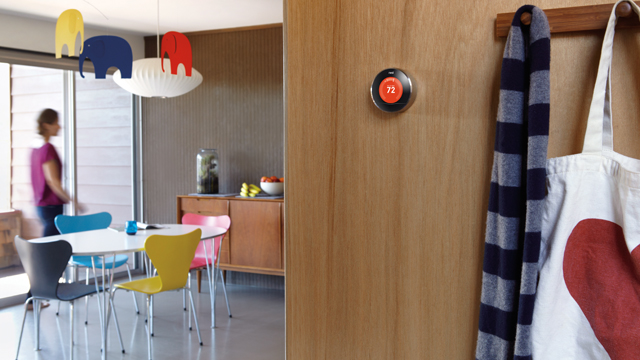Ultra Low Energy standard set to make smart homes ubiquitous
Smart homes set to become mass market

TechRadar Pro interviewed Avi Barel, Director of business development for the ULE Alliance to talk about the Ultra Low Energy standard (ULE) which has the potential to transform the current smart home market by making building automation, security and climate control solutions more eco-friendly, secure and affordable.
TRP In which areas and sectors do you see the biggest potential for ULE?
AB ULE technology can add value to a wide range of applications. At the ULE Alliance, we are currently focusing our work on solutions and applications for Home & Building Automation, Security, Climate Control and Healthcare. That's where we see the biggest potential at this point in time. However, the ULE standard offers many advantages which can also be useful for other markets and scenarios.
TRP What does the ULE standard have to offer that isn't covered by other wireless standards?
AB The idea behind the Internet of Things (IoT) in general, and smart homes in particular, is to make our lives and homes more convenient, secure and energy efficient. Achieving these goals requires solid support from the underlying technologies which are used to build IoT devices.
The current short range wireless technologies use the 2.4 GHz or 900 MHz frequency bands. That means that they have to share the spectrum with other existing technologies such as Wi-Fi and Bluetooth. This leads to far reaching implications: the more devices are being used in the area, including products in neighbouring properties, the lower the data bandwidth and range. Repeaters are a makeshift solution but increase the cost of ownership and the complexity of installation. Interference is another significant problem. The Wi-Fi signal can have a massive impact on the performance of the smart home devices – and vice versa.
ULE technology uses dedicated frequency bands - 1880-1900 MHz in Europe - and is therefore interference free. ULE-frequencies can cover longer distances of up to 50 metres within buildings and up to 300 metres outdoors; partly because the spectrum isn't been used by other devices in the vicinity. That's why ULE-based networks are highly reliable and simple at the same time. Additional devices such as repeaters that may fail - and also add to the costs of ownership - are not required. The installation couldn't be easier. Usually, the push of a button is all that is needed to add a new device to the network.
Sign up to the TechRadar Pro newsletter to get all the top news, opinion, features and guidance your business needs to succeed!
As the name Ultra-low Energy suggests, ULE is also extremely energy efficient. Actuators and sensors based on the ULE standard can be operated up to ten years on the same set of batteries.
TRP What kind of information can be transmitted via ULE?
AB The ULE standard is based on secure DECT-frequencies which are also used for cordless telephones. That means that ULE can deliver voice and video in addition to data and control signals with a data throughput of up to 1 Mbit/s. As a result, the solutions become smarter. For example: In case of an alarm, instead of just sending a loud signal, ULE based devices can provide detailed information throughout the entire home with announcements such as "smoke in the kitchen". In other words: ULE changes the user experience and, in some cases, can even help to save lives.
TRP In which countries has ULE been launched so far?
AB ULE is using the same physical layer protocol as DECT, which means that ULE is available in every country in which DECT has been enabled - such as Europe, the US and Americas, Japan, Korea and South East Asia. In China and India, the DECT spectrum is currently been negotiated.
TRP What needs to be done before users can enjoy a smart home system which isn't limited to a single provider?

Désiré has been musing and writing about technology during a career spanning four decades. He dabbled in website builders and web hosting when DHTML and frames were in vogue and started narrating about the impact of technology on society just before the start of the Y2K hysteria at the turn of the last millennium.